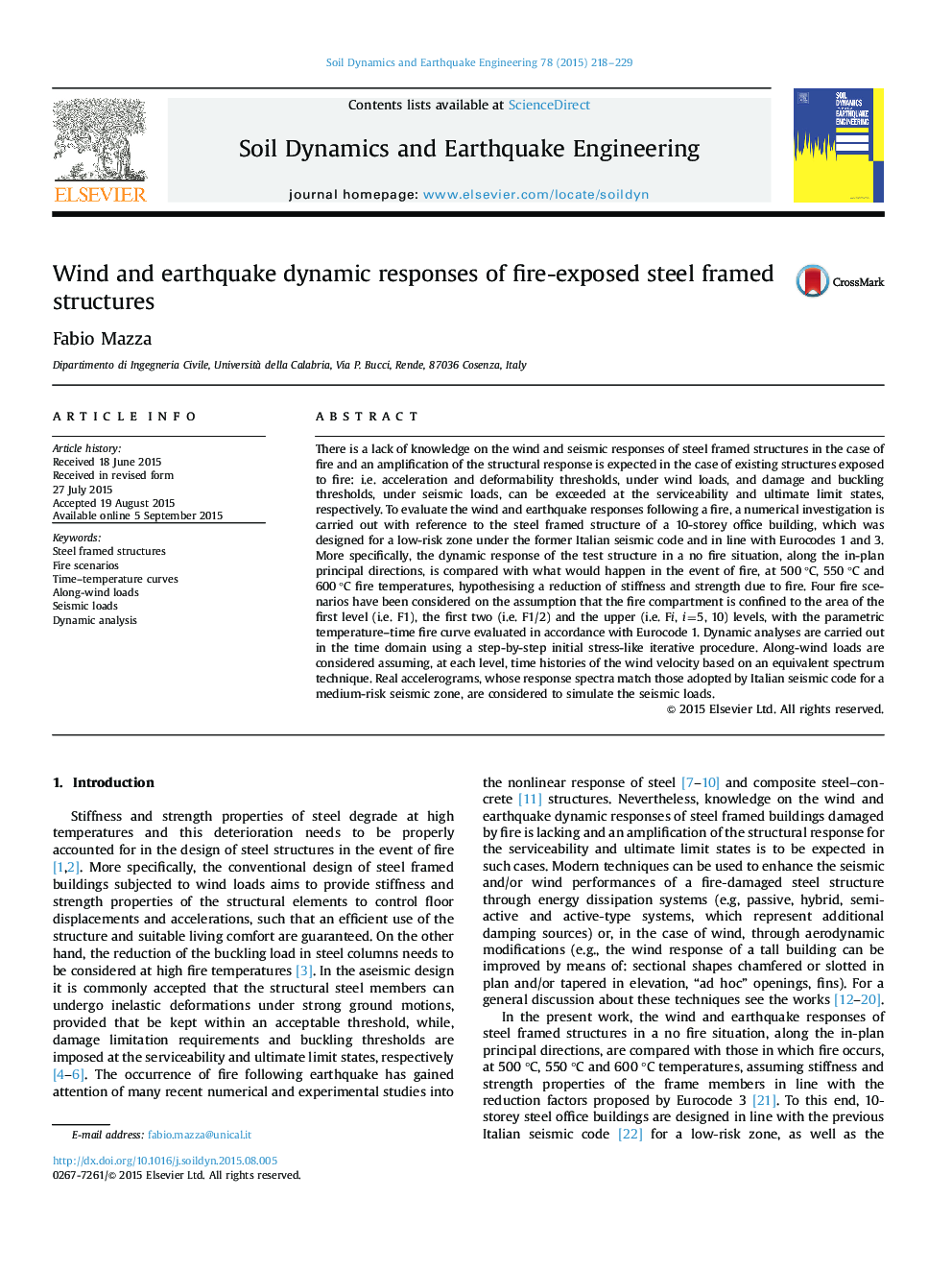| Article ID | Journal | Published Year | Pages | File Type |
|---|---|---|---|---|
| 304048 | Soil Dynamics and Earthquake Engineering | 2015 | 12 Pages |
•Time–temperature curves of the fire-compartment and fire scenarios.•Reduction of mechanical properties due to fire loading before wind and earthquake.•Along-wind response of fire-damaged steel framed structures.•Seismic response of fire-damaged steel framed structures.
There is a lack of knowledge on the wind and seismic responses of steel framed structures in the case of fire and an amplification of the structural response is expected in the case of existing structures exposed to fire: i.e. acceleration and deformability thresholds, under wind loads, and damage and buckling thresholds, under seismic loads, can be exceeded at the serviceability and ultimate limit states, respectively. To evaluate the wind and earthquake responses following a fire, a numerical investigation is carried out with reference to the steel framed structure of a 10-storey office building, which was designed for a low-risk zone under the former Italian seismic code and in line with Eurocodes 1 and 3. More specifically, the dynamic response of the test structure in a no fire situation, along the in-plan principal directions, is compared with what would happen in the event of fire, at 500 °C, 550 °C and 600 °C fire temperatures, hypothesising a reduction of stiffness and strength due to fire. Four fire scenarios have been considered on the assumption that the fire compartment is confined to the area of the first level (i.e. F1), the first two (i.e. F1/2) and the upper (i.e. Fi, i=5, 10) levels, with the parametric temperature–time fire curve evaluated in accordance with Eurocode 1. Dynamic analyses are carried out in the time domain using a step-by-step initial stress-like iterative procedure. Along-wind loads are considered assuming, at each level, time histories of the wind velocity based on an equivalent spectrum technique. Real accelerograms, whose response spectra match those adopted by Italian seismic code for a medium-risk seismic zone, are considered to simulate the seismic loads.
